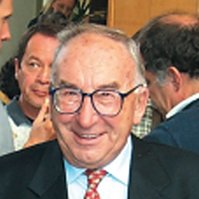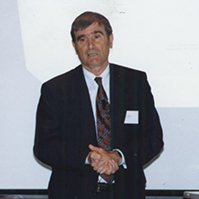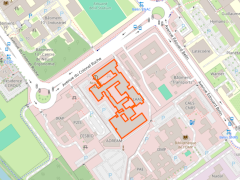A LABORATORY AT THE CUTTING EDGE OF INNOVATION SINCE 1968
The history of LAAS-CNRS
When Jean Lagasse created LAAS in 1968, Automation was still a young science, and its field extended from electronic circuits to control theory, including signal processing. Computer science was taking off. Robotics was in its infancy. The transistor replaced the vacuum tube as a commonly used component and the microprocessor was unknown. However, Man would land on the Moon a year later. Space was the stake in a breathtaking race between the great powers, and a formidable engine for scientific research. A laboratory of automation and its space applications was therefore at the center of a strategic problem and domain. Jean Lagasse had this vision and convinced the CNRS of this creation.
Quite quickly, the notion of “system” emerged as a concept at the center of the work carried out in the laboratory, and Space was no longer the only application that motivated research. Having become a laboratory for automation and systems analysis, then a laboratory for systems analysis and architecture, placing complexity at all scales as a research object, the LAAS has strongly contributed to forging over the next forty years to flow, new disciplines and to bring French science to the forefront in its fields.
“Always higher, always further in creativity and the joy of being together" Jean Lagasse, founder of LAAS-CNRS
A laboratory for scientific innovation, the LAAS was also a laboratory for the organization, operation and application of research. The concept of “laboratory advice” was born there. What we call partnership research today was conceived in the original form of “joint research-industry laboratories”. The privileged relationship with manufacturers, large groups or SMEs, has resulted in an “affiliates club”. Combining research, training – the LAAS hosts two doctoral schools, welcomes more than 250 doctoral students and 200 interns – and partnership with industry, the LAAS “invented competitiveness clusters before the letter” as Mr. François Goulard wrote , Minister Delegate for Higher Education and Research, visiting the laboratory in 2005.
Anchored in its region and in its academic and industrial environment, collaborating with major research centers in Europe and around the world, the LAAS prepares the changes and scientific revolutions of tomorrow. At the confluence of computing, automation, robotics and micro and nano technologies, the design and production of nano-structures and nano-robots are now within the scope of today's research work. 'today. The prospects are immense in many application fields, such as health, the environment, or transport, and the rapprochement with life sciences or biochemistry opens the way to fruitful interdisciplinary research. The deployment of nano-objects, cyber-physical systems as well as controlled energy management require jointly addressing all issues of perception, actuation, communication, networking, autonomy and resilience of systems. We need to rethink principles and theories in several areas. This forms the basis of the LAAS research program in the coming years.
A program around which the LAAS and its partners will confirm Jean Lagasse’s adage:
“Always higher, always further in creativity and the joy of being together. »
THEY MARKED
The history of LAAS-CNRS

Jean Lagasse
LAAS' historic founder

Georges Giralt
Robotics pionneer












